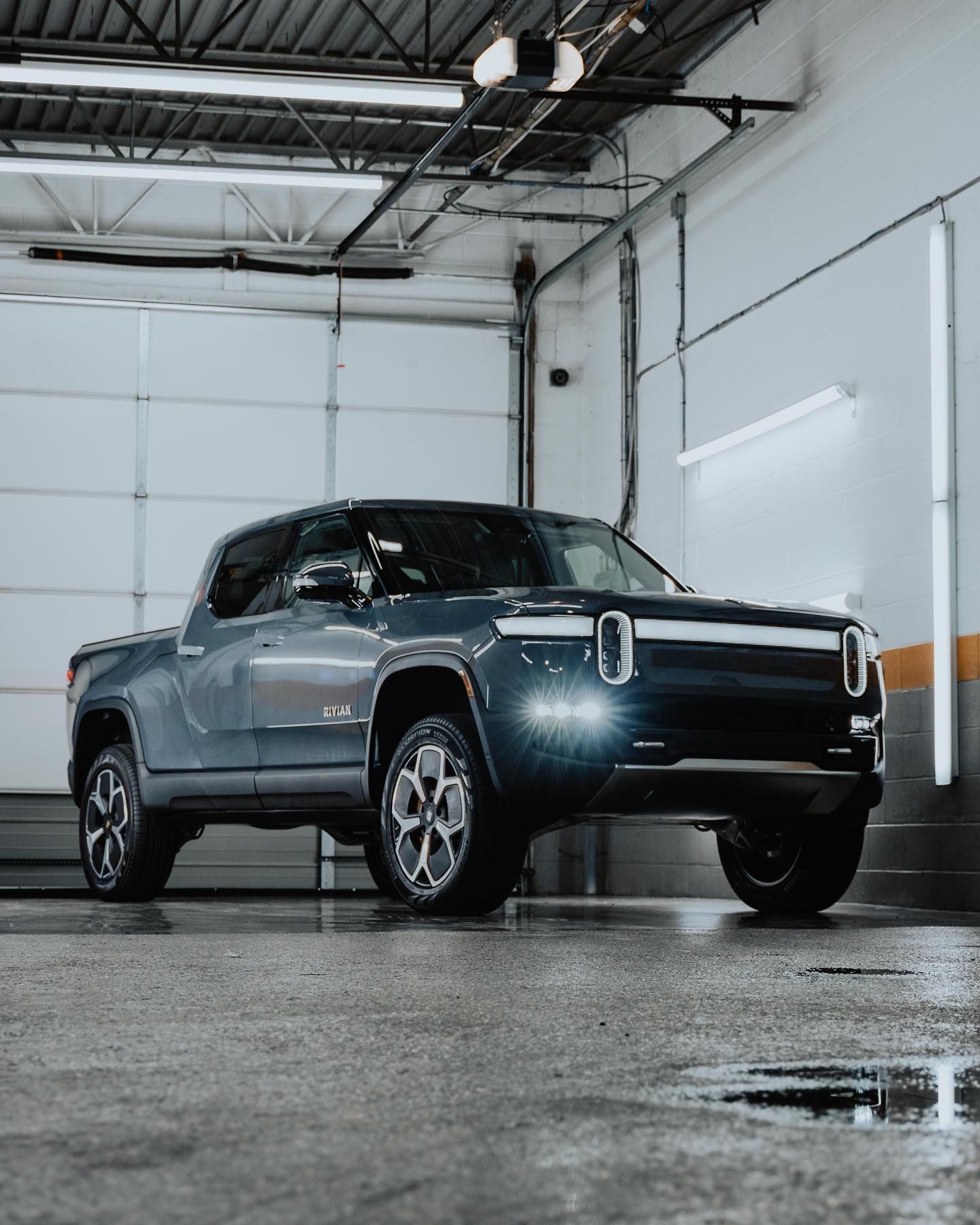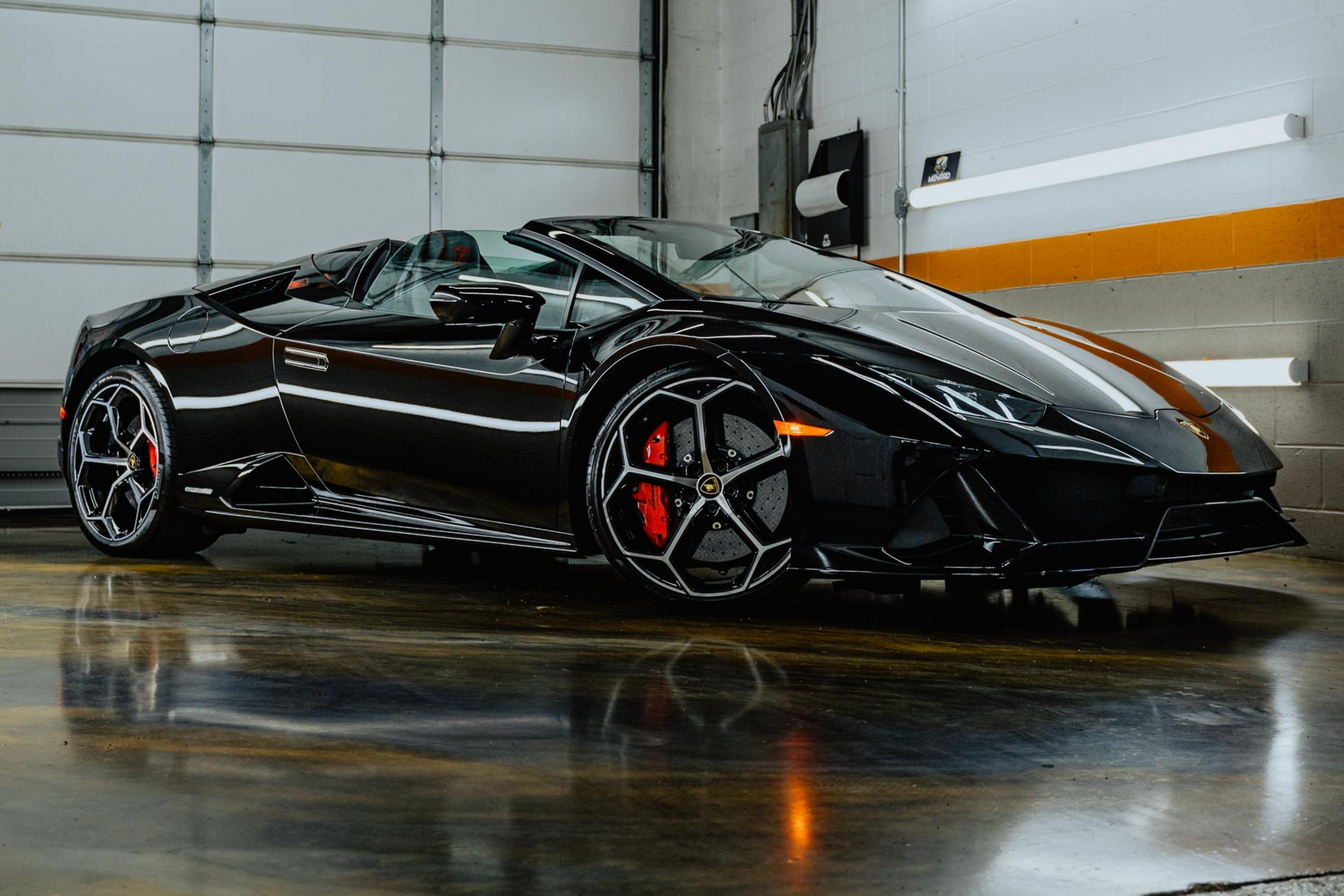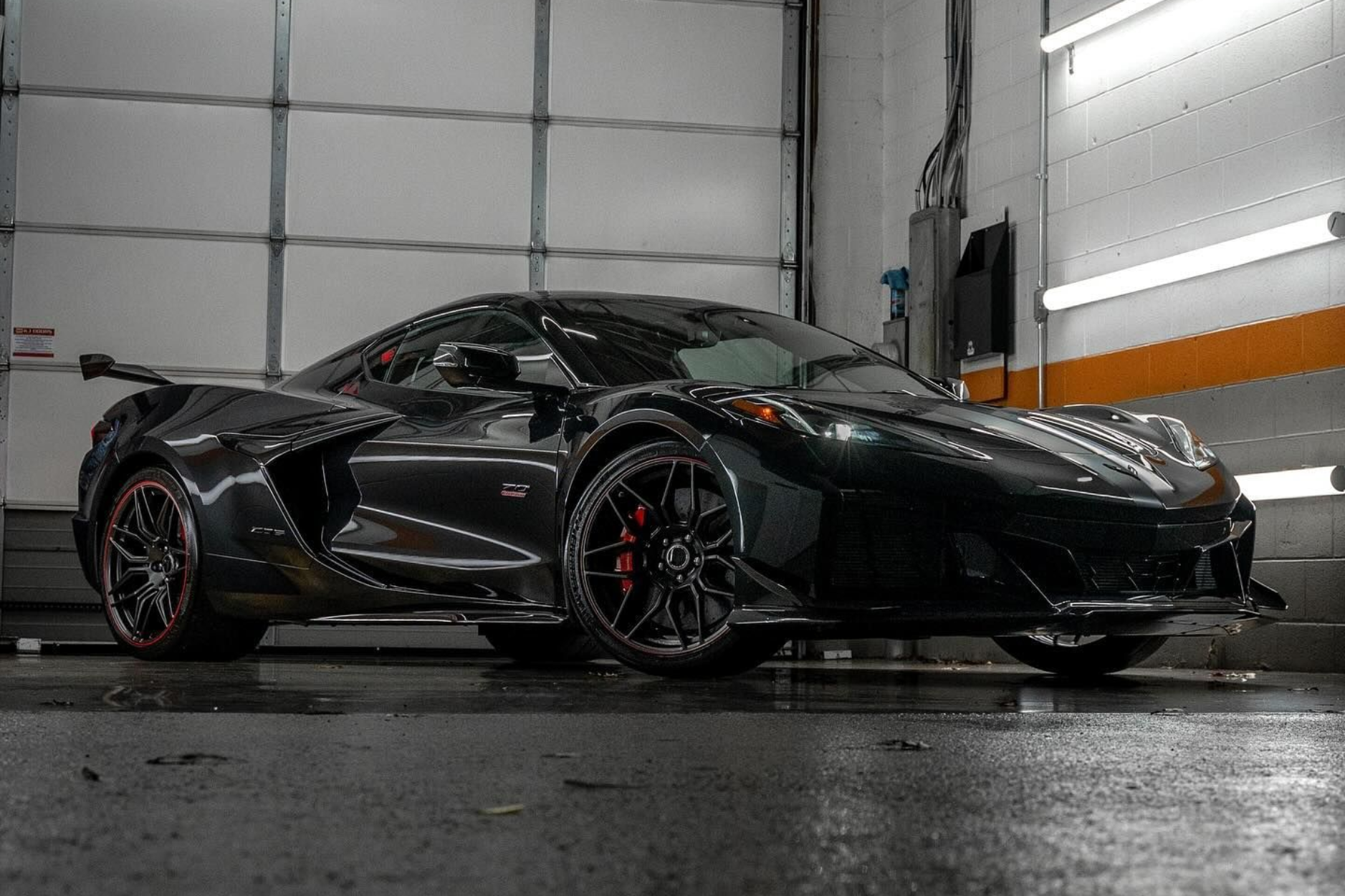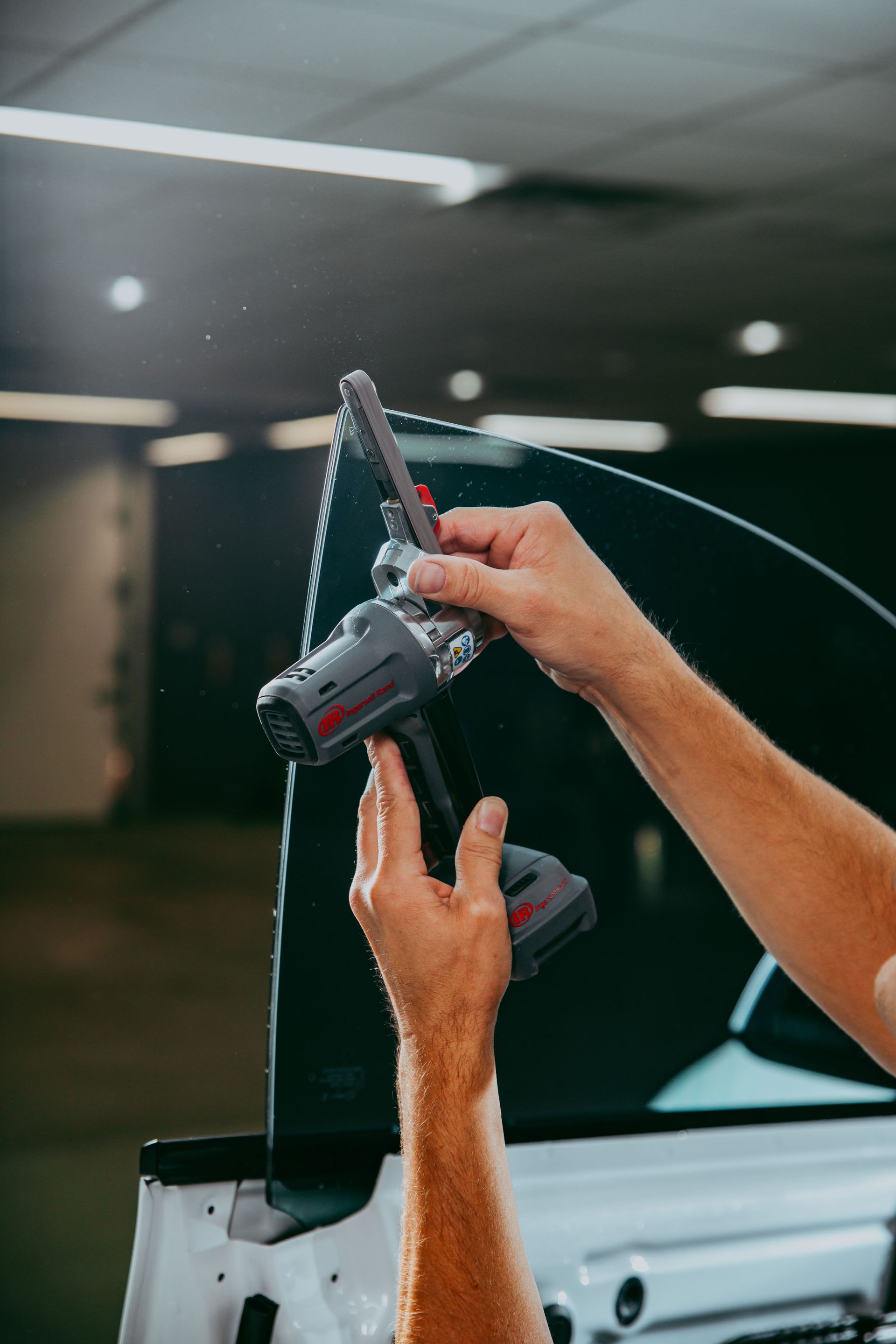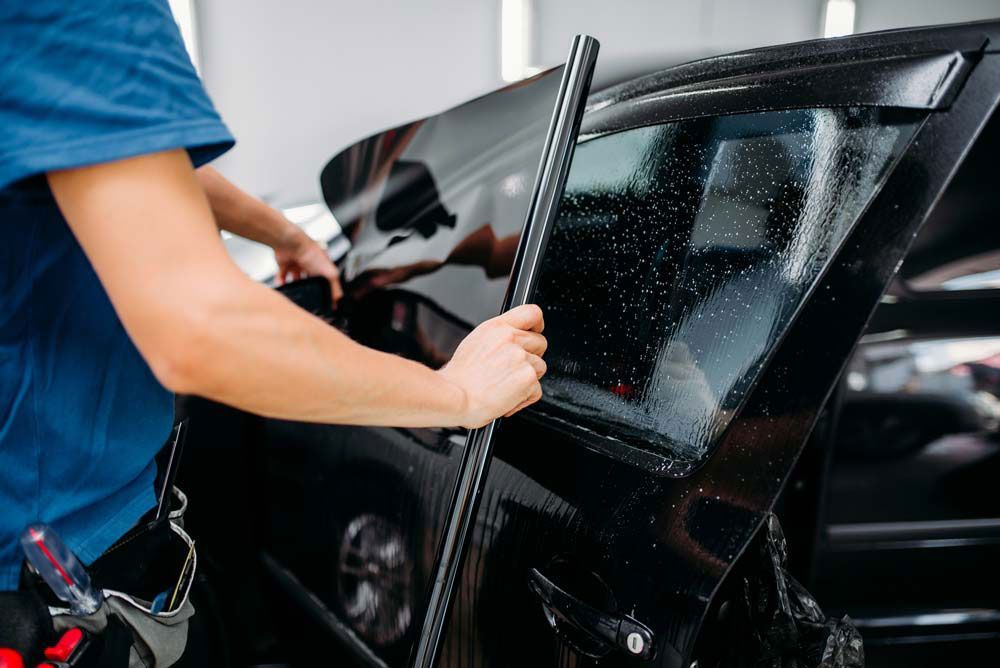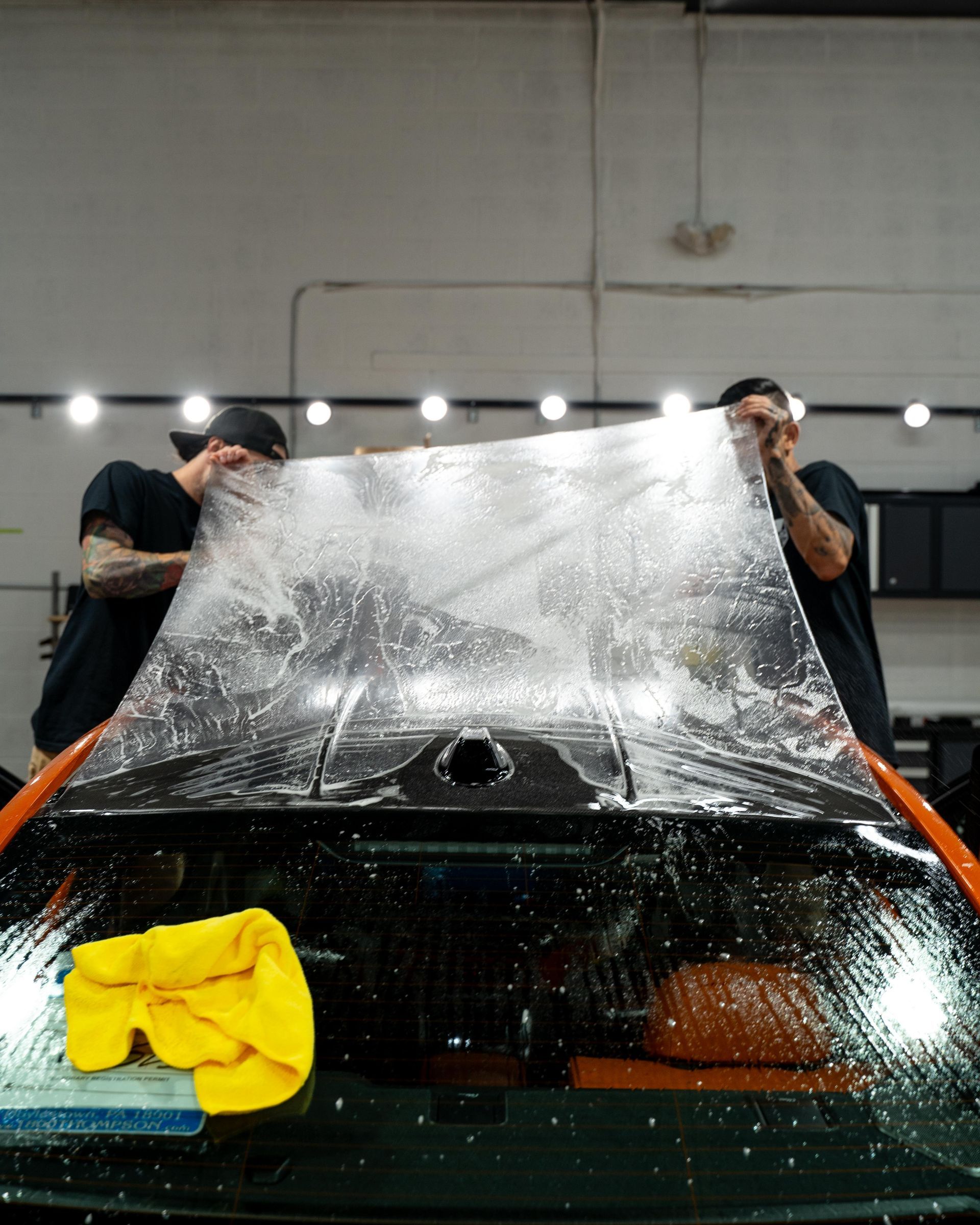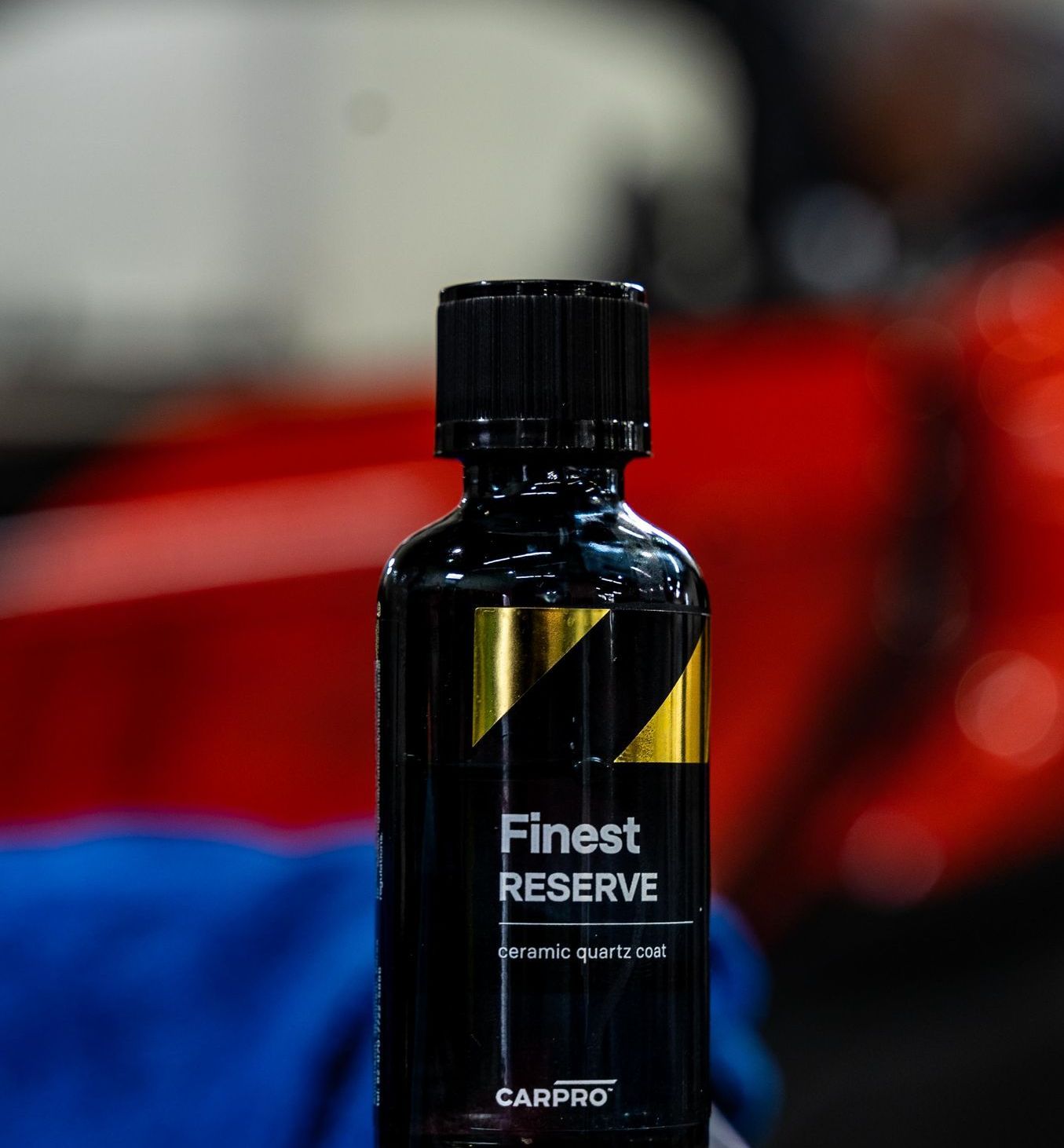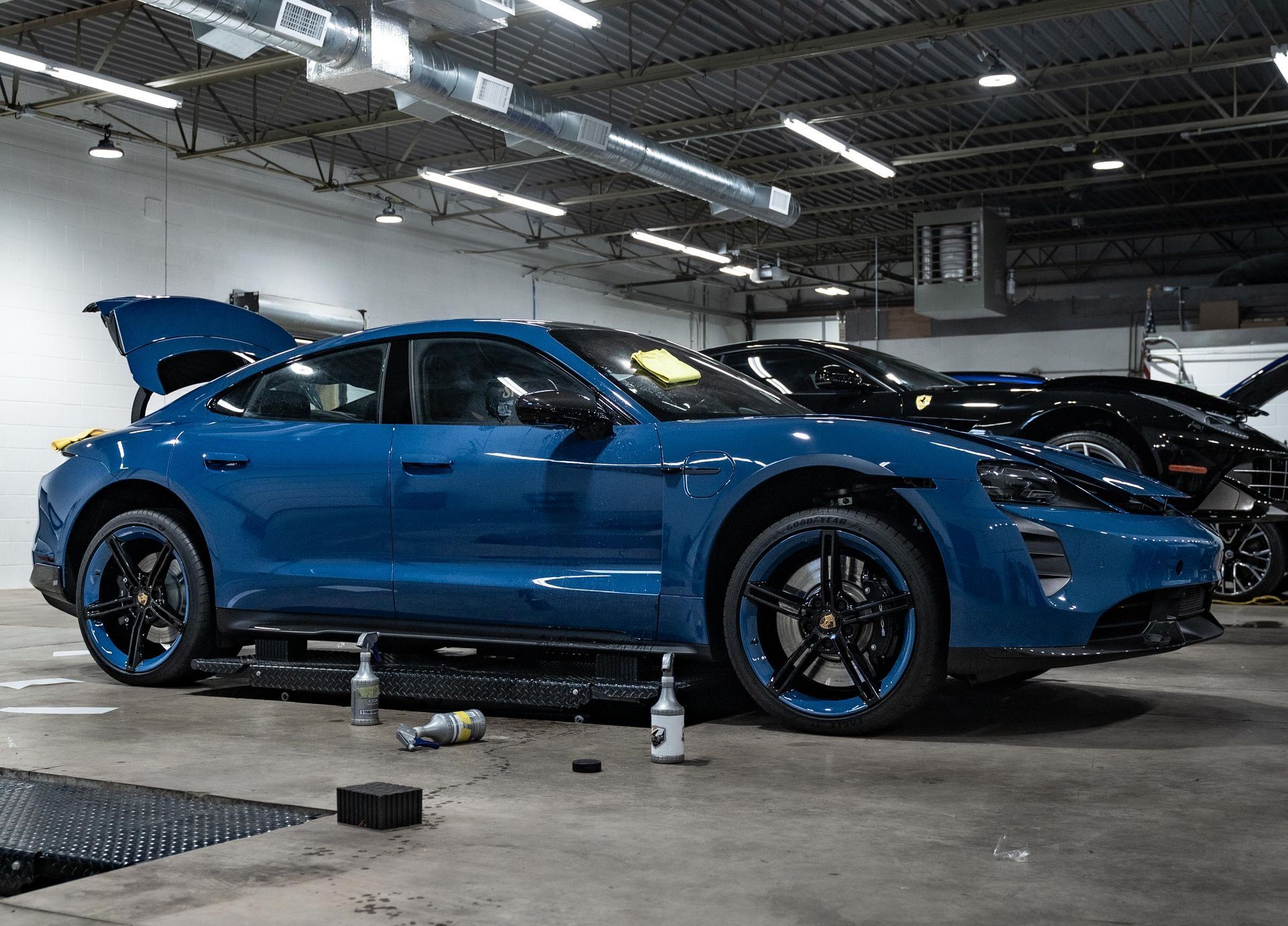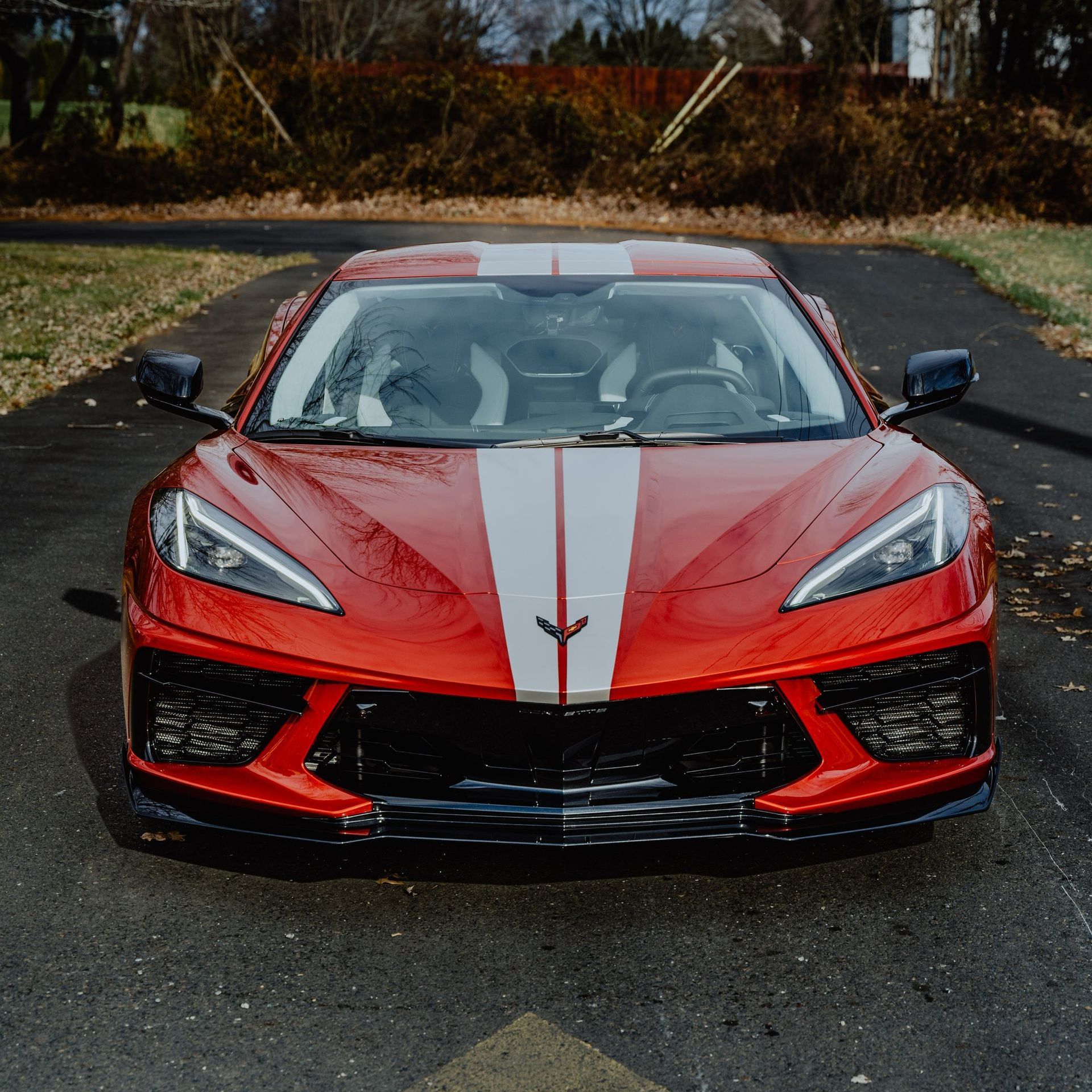How Experts Ensure Seamless Paint Protection Film Work: Professional Installation Techniques
CALL (833) 263-6273
Paint protection film might sound like just a clear sticker you slap on your car, but anyone who's seen a sloppy installation knows it's far from simple. Getting that invisible shield to sit perfectly smooth and stick tight takes more than good material—it demands skill, patience, and the right approach from start to finish. In this article, we'll break down exactly how experts handle every step so your paint protection not only looks flawless but also lasts for years. Experts ensure seamless paint protection film installation through meticulous surface preparation, precise measurement and cutting, and the use of specialized slip solutions to allow perfect positioning. They apply controlled heat and pressure techniques, use sharp tools for clean edge trimming, and implement advanced methods like edge wrapping and heat sealing to prevent lifting, resulting in a durable, nearly invisible protective finish.
Preparing the Vehicle's Surface
Before a single square inch of film touches your car, professionals embark on an exacting cleaning ritual that transforms the surface into a pristine canvas. This isn't just about wiping off visible dirt; it's a multi-step process designed to eliminate every trace of contaminants that might sabotage adhesion or mar the final look. A thorough wash using a pH-neutral automotive shampoo removes everyday grime without leaving behind residues that can interfere with the film's bond. But even after washing, stubborn industrial particles and microscopic fallout linger stubbornly, clinging invisibly to your paint. This is where the clay bar becomes an indispensable tool. By gently gliding over the surface, the clay bar lifts embedded contaminants like brake dust and airborne pollutants that no wash could dislodge. Skipping this step often results in small imperfections, turning what should be a smooth shield into an uneven eyesore.
After physically removing contaminants, technicians perform one last critical step before film application: wiping down the entire surface with an isopropyl alcohol solution. Using a lint-free microfiber towel, they methodically erase any oils or wax residues left behind from previous products or skin contact during preparation. This final cleanse ensures every molecule beneath the film will form a solid, lasting bond. It's crucial to maintain proper ambient conditions during this phase. The surface temperature should ideally hover between 59°F and 77°F. Outside these ranges, adhesives may behave unpredictably, either drying too fast or not curing properly, leading to bubbles, lifting, or premature failure. The meticulous nature of surface preparation cannot be overstated. Each effort, from washing and clay barring to alcohol wiping, contributes cumulatively to achieving a seamless finish that looks factory-original and stands up to years of wear and tear. Overlooking even one step can invite flaws that frustrate both installers and customers alike.
Choosing the Best Protective Films
Not all paint protection films behave the same way once applied. The choice of film directly impacts not only how well your car will be shielded from scratches, chips, and UV damage but also how effortlessly the film will blend with your vehicle's contours, leaving no unsightly edges or bubbling. This decision is central to achieving a seamless, professional-grade finish that lasts. Premium films stand out because their advanced formulations offer superior clarity and durability. High-quality films are engineered to withstand harsh environmental stressors for up to a decade without yellowing or peeling. Their adhesives are carefully calibrated to stick firmly yet remain removable without harming the paint beneath, a crucial feature for professional installers. These premium products often come with factory-backed warranties, reinforcing confidence in their long-term reliability.
In contrast, economy options might seem appealing due to lower upfront costs; however, they tend to compromise on several fronts. Common trade-offs include reduced resistance to UV rays leading to yellowing, less effective adhesives that can cause premature lifting or bubbling, and shorter protective lifespans, typically between three and five years. For customers mindful about initial expenses rather than longevity or appearance, these can suffice, but expert installers know these films may complicate achieving that flawless final look. Selecting a quality film means setting yourself up for success during installation and beyond. Enhanced materials allow better conformability over complex curves and edges, not just protecting but enhancing the vehicle's appearance with a virtually invisible shield. Innovations like self-healing top layers found in some premium films provide added benefits such as gloss retention and minor scratch repair activated by heat or sunlight, features economy brands cannot match. While cost considerations always play a role in choosing films, it's essential to weigh price against potential long-term frustration caused by film failure or aesthetic compromises. Investing in proven, professional-grade PPF ensures easier installation and happier clients who appreciate their car's impeccable brilliance for years.
Techniques for Problem Areas
When it comes to problem areas such as curves, edges, and recessed parts, the installation process demands particular attention and refined skills. These zones are notorious for causing issues like bubbling, wrinkling, or peeling if handled improperly. One key to success lies in understanding how to manipulate the film's physical properties through controlled heat application and carefully measured tension. Take curves, for instance. The PPF material, while durable and elastic, can resist conforming seamlessly around rounded shapes without becoming distorted. Applying a heat gun at controlled temperatures softens the film just enough to increase its pliability without compromising the adhesive. This softened state allows the installer to gently mold the film so it hugs the contours perfectly, minimizing wrinkles or gaps. However, overheating risks damaging the adhesive layer or causing discoloration, which is why precise temperature control is essential during this stage.
Edges and corners present another set of challenges. Here, a slight stretch applied to the film becomes necessary. But stretching must be carefully moderated; too much tension leads to distortion or early film failure, while too little results in loose adhesion vulnerable to peeling. Using a squeegee with consistent but gentle pressure helps smooth out any trapped air bubbles while pressing the film firmly onto sharp angles. The technique often involves working from the center outward to systematically expel all air pockets and create uniform contact with the surface. Recessed features such as door handles, badges, or deep grooves add complexity because they create tight spaces where adhesion could weaken without proper handling. Professional installers rely on a slip solution, commonly made from distilled water mixed with a few drops of baby shampoo or mild detergent. This lubricating solution is sprayed onto both the vehicle panel and the adhesive side of the film before placement. It permits minute repositioning after initial application, ensuring precise alignment over tricky spots without prematurely locking in place.
Once in position, careful squeegeeing removes excess solution and secures a strong bond. Perfecting these challenging details ensures both longevity and a flawless appearance. Using controlled heat to soften and shape film over curves, applying measured stretch combined with squeegee pressure on edges, utilizing slip solutions for repositioning in recessed or intricate areas, working methodically from center outward to eliminate bubbles, and avoiding excessive tension that risks distortion are all critical components of expert installation.
Mastering Edges and Seams
The edges and seams of paint protection film are where precision truly shines or falters. A slight misstep here can create visible flaws or lead to premature lifting, undoing the whole purpose of installing PPF. At the heart of perfect edgework is alignment. Before cutting into the film, professionals meticulously position it so that it covers the entire panel with a small allowance. This overlap ensures full protection around curves and corners without risking exposure of the underlying paint. Once aligned perfectly, cutting becomes the critical act. Using ultra-sharp blades specifically designed for automotive wraps, technicians trim the film just shy of the painted surface. This intentional avoidance keeps cuts clean while preventing accidental scratching. Precision cutting ensures crisp edges and prevents peeling points where dirt and moisture could creep in.
The next step, edge wrapping, is an art form on its own. Rather than merely ending the film at a hard edge, installers gently fold the film around corners, door jambs, or bumpers. This technique demands warming the film with controlled heat to soften it without compromising adhesive strength. The warmed film becomes pliable, allowing it to embrace curves snugly and reduce stress points that commonly cause lifting over time. Edge wrapping not only improves aesthetics by concealing cut lines but also fortifies durability. When the film secures tightly around edges, it forms a seamless barrier sealing out contaminants like dirt and water that otherwise penetrate gaps and degrade adhesion. Professional installers routinely use edge wrapping methods due to their proven reduction in edge lifting incidents. After wrapping, installers often apply heat sealing, a focused application of heat along the edges activating the adhesive more thoroughly, promoting long-term bond resilience. Coupled with careful pressure management using felt-edged squeegees, this phase strengthens adhesion without overstretching or distorting the film's optical clarity. Each of these steps contributes critically toward maintaining both the appearance and the protective function of PPF over years of wear. Installers typically spend significant time just on edges and seams, fully aware that shortcuts here lead to costly failures.
Achieving a Seamless Finish
A truly seamless paint protection film installation demands more than just applying a piece of film. It requires deliberate, patient work to ensure that no edges show, no bubbles mar the surface, and the film aligns perfectly with every curve and crevice of the vehicle. One cornerstone method involves systematically working out trapped air and liquids. By starting at the center of each film section and firmly pressing outward with a squeegee, installers displace any pockets that can cause bubbling or peeling later on. This careful, methodical pressure ensures an even bond between the adhesive layer and the car's paint. The choice of tools here plays a subtle yet critical role. A soft-edged squeegee acts like a gentle hand coaxing the film into place rather than forcing it harshly. This leads to fewer accidental scratches or marks, tiny imperfections that can betray even the most meticulous installation.
Professional installers have found that substituting rigid, hard plastic squeegees for softer foam or felt models markedly improves surface quality. Heat is another vital factor often underestimated by those new to PPF installation. Proper heat application softens the film, making it pliable enough to hug complex contours like door handles, mirrors, or sharply curved fenders without stretching beyond its limits. However, too much heat risks damaging the adhesive or creating cloudiness in the film itself, effects that undo hours of labor. Achieving this balance requires both knowledge of material properties and keen temperature control.
Beyond physical techniques lies an invisible pillar supporting seamless results: training and experience. The coordination required for simultaneous film placement, tension control, heat management, and instant problem solving cannot be overstated. Installation is as much art as it is technical skill, a dance between human touch and materials science. Striving for near invisibility means dedicating time not only during application but also in pre-installation preparation, meticulously cleaning surfaces to remove oils, dust, or residues that undermine adhesion, and in post-installation care to maintain integrity over time. Every step contributes cumulatively toward prolonging the lifespan of the protective layer while preserving the vehicle's showroom aesthetic. Mastering these precise techniques transforms paint protection film from a simple shield into a virtually indiscernible second skin. Such expertise is built on rigorous training and hands-on experience, the foundation that separates professional installations from amateur attempts.
Leading PPF Installers in Voorhees, NJ
Give your vehicle long-lasting defense and a flawless finish with Menard Premium Detailing, the trusted choice for
high-quality paint protection film services in Voorhees, NJ. Our expert team installs premium PPF designed to shield your paint from road debris, UV exposure, and everyday wear while maintaining a smooth, nearly invisible appearance. If you want stronger protection and a cleaner, more polished look that lasts for years, Menard Premium Detailing is ready to deliver exceptional results.
Schedule your PPF installation today and keep your vehicle looking its best!

